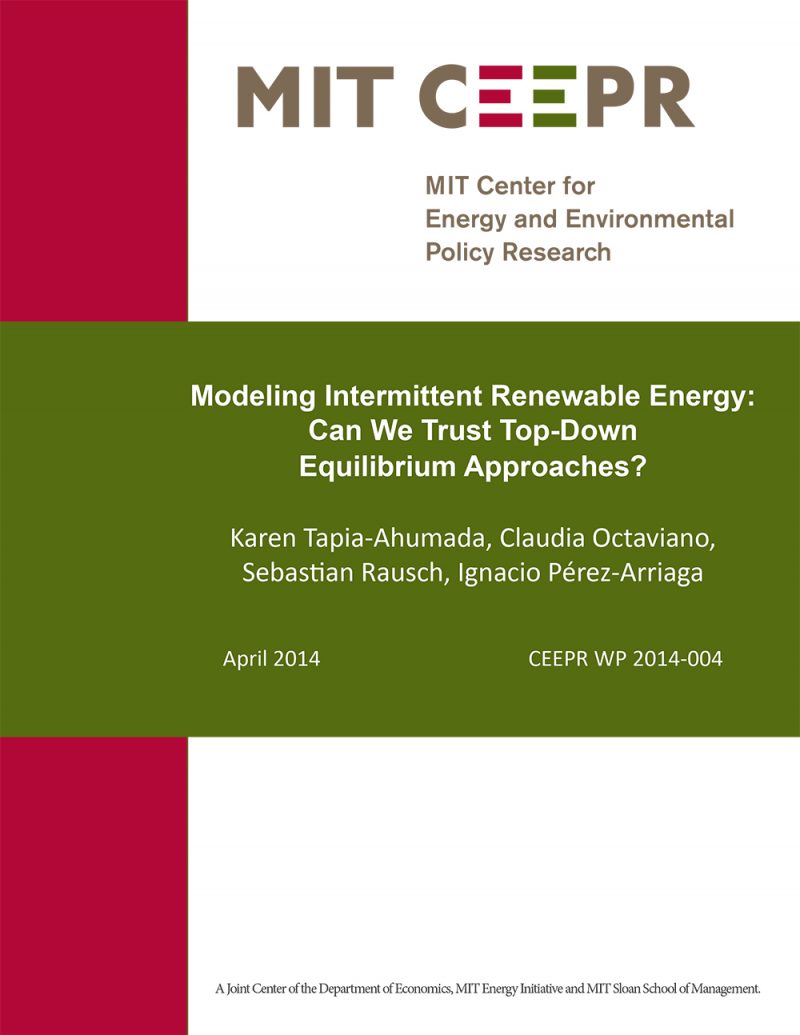Modeling Intermittent Renewable Energy: Can We Trust Top-Down Equilibrium Approaches?
Karen Tapia-Ahumada, Claudia Octaviano, Sebastian Rausch, Ignacio Pérez-Arriaga
April 2014
Economy-wide top-down equilibrium (TD) models have traditionally proved to be valuable tools for assessing energy and climate policies. New modeling challenges brought about by intermittent renewable energy sources, however, require to carefully review existing tools. This paper provides an overview of and quantitatively assesses the suitability of TD modeling approaches to deal with intermittent renewables in the electricity sector. To this end, we develop a benchmark model that integrates a bottom-up electricity sector model—designed to analyze the expansion and operation of an electric power system with a large penetration of wind generation—within an economy-wide general equilibrium framework. We find that, if properly specified, a TD approach to modeling intermittent renewable energy is capable of roughly replicating the results from the benchmark model. We argue, however, that for practical purposes TD modelers do not possess the required information. This problem is further compounded by our finding that a TD approach is highly sensitive to key parameters which are a priori typically unknown or at least highly uncertain. While the integrated approach presented in this paper offers one possible alternative to overcome some of the issues that plague traditional TD models, our analysis suggests that traditional TD simulation tools have to be enhanced to avoid potentially misrepresenting the implications of future low-carbon policies.
Keywords: Renewable Energy, Electricity, Intermittency, General Equilibrium, Top-down Modeling, Bottom-up Modeling



